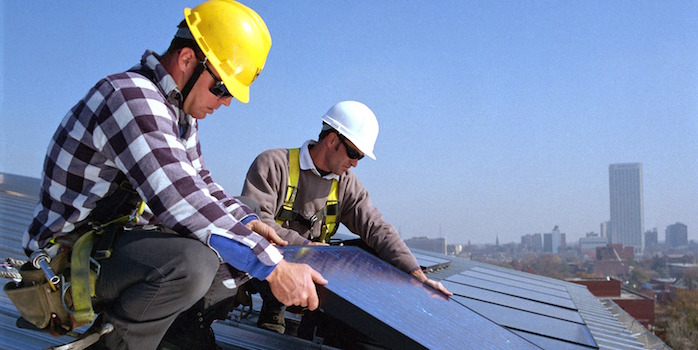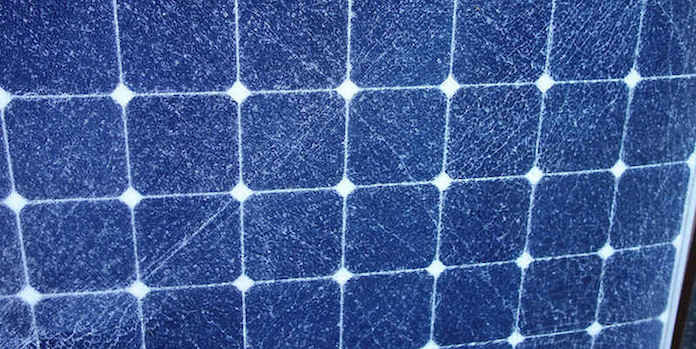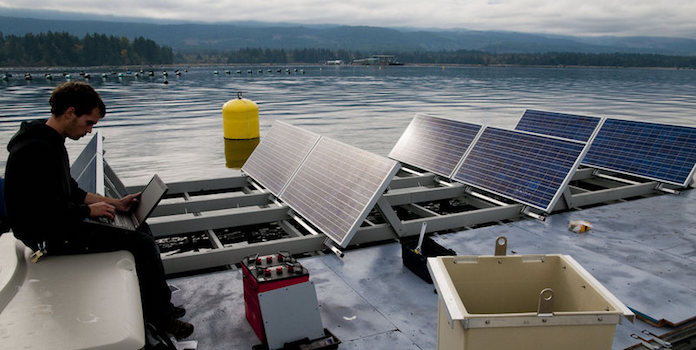Is Solar Panel Removal Possible?

For anyone asking themselves ‘Is solar panel removal possible?’ read on as we explore common reasons, routes, and issues.
It might seem like solar panel removal would be a bit of a taboo topic in a community so heavily focused on renewable energy production, but the reality is that solar panels are just like any other piece of equipment attached to your home. Just like the occasional HVAC replacement, it’s entirely possible that you will need to remove your solar panels for one reason or another at some point.
We look at the obvious reasons that you might need to remove your panels, some typical routes to take for removal and some of the usual issues that you might run into during or after the process.
Why do you want the panels removed?
This question is vital to ask because it will help to define exactly what we hope to achieve with the solar panel removal. Getting rid of a system completely versus just needing a few panels removed for a repair can mean huge differences in time and money spent on the project.
Whatever the reason, we should point out that it would be foolish in most cases not to consult your original installer or at least a third-party professional anytime you are looking to make modifications to your solar panel installation. These are electrical components, after all, and working on a rooftop environment is always cause for an extra level of care.
If you need to repair your solar panels

Although solar panels are quite durable, they can occasionally suffer damage from falling tree limbs, hail, or an errant baseball. Faced with this scenario, it is important to determine whether or not the panels need to be removed in the first place.
First, check your output. If the panel is still producing power, then it might simply be a cosmetic issue that won’t require cash to fix unless the appearance of your solar installation is important to you. In that case, a professional might be able to replace broken glass on a panel without removing it from the roof. This repair should cost about $572 on average depending on the scope of the work.
Remember:
If you are getting rid of your own solar panels
There might come a time in which you simply don’t want your solar panel installation on your roof. Maybe you are moving and want to take your panels with you, or perhaps you are replacing your panels with a newer version of the technology. Whatever the case, removing your own solar installation doesn’t have to cost you an arm and a leg if your needs are relatively straightforward.
Solar panels are light, but their electronic components do require special care and it might also be necessary for your remover to be a certified electrician to ensure that your system is safely removed from the grid and there are no lingering issues that could violate building codes on your home.
Professional Solar Panel Removal Service
Because of the care and expertise required, it would be good to consult a professional about removing your panels and hardware. They will be able to diagnose issues on-the-fly during the removal and determine the best course of action to get the job completed quickly and appropriately. Assuming everything is straightforward with your setup, expect to pay roughly the following amounts for each individual solar panel removal service that you need.
- Basic removal – $300-$500
- Electric utility main disconnect – $100-$200
- Shipping cost for solar panels – $200
- Removing mounting hardware – $600
- Patching holes and miscellaneous roof repairs from removal – $600
All told it should cost around $1800-$2100 to have your panels completely removed and have your roof back to the condition it was in before the installation.
DIY Solar Panel Removal
Not for the faint of heart, DIY solar panel removal is a daunting task that requires a lot of expertise and potentially unavoidable certifications to do the job properly. It is possible to go this route if you own your own system, but remember that if something were to go wrong, you would be the one holding the bag.
Following our solar panel installation basics in reverse, here are the steps necessary to remove your system:
- Disconnect system from your breakers and any metering equipment including grid interconnection.
- Disconnect all individual panels from their micro-inverters or disconnect the strings from the single inverter.
- Remove solar panels from the rooftop mounting hardware and lower them carefully to the ground.
- Remove mounting hardware from the roof.
- Remove any electrical cabling and wires from the roof.
- Repair any holes left by mounting hardware and replace missing shingles or tiles.
If you are not a certified electrician, it is unlikely that you could legally perform any of the electrical disconnects yourself. Hiring an electrician to assist with safely disconnecting your system could allow you to remove the panels on your own time then and at that point, it would purely be a disassembly and repair project.
If You are Getting Rid of Leased Solar Panels
This one is tricky. Solar leases are complicated by the fact that there is often a long (20+ year) lease involved with the contract. If you are attempting to remove your solar panels before the lease ends then you will probably be in for a world of hurt when trying to get out of your contract.
Once the Solar Lease Ends
If you no longer want your solar system after your lease ends, your leasing company is supposed to remove your installation at no charge to you and ensure that your roof doesn’t suffer from any damages caused by the mounting hardware. This will offer the cleanest removal option and leases are designed for you to be hands-off from start to finish and the removal should be no different.
Although this should happen at the beginning of your solar lease research and negotiation, it is hugely important that you have done your homework and know both your rights and responsibilities concerning your solar lease as well as any potential pitfalls that might come back to bite you later.
If You are Breaking a Solar Panel Lease
Good luck.
Entering into a solar panel leasing agreement is no different than any other legally binding contract, and in doing so you have made a commitment to pay the leasing company a certain amount of money over the course of the lease. It’s possible that your lease contract has some stipulation or exemption, but the most likely outcome is that you will have to pay a considerable sum of money to break your lease.
They may ask you to pay the entire remaining balance of the lease payments, including annual increases, there might be a discount, or there may be an option for you to purchase the system outright from the company which would allow you to either remove it on your own or sell it along with your home if that was the reason you wanted to remove the system in the first place.
Whatever your goal for getting out of the lease, do remember that leases can be very complicated and it would be good to consult a lawyer before committing to something that could land you in legal trouble.
Read More: Buy Solar Panels: What are your best options?
If You Need to Fix or Replace Your Roof
Having a rooftop solar installation on your roof in the midst of a major repair issue can greatly complicate things. It’s entirely possible that your roof’s problem can be fixed without removing your solar system, but unfortunately it is just as likely that your mounting hardware helped to contribute to the issue and it will require the removal of your system in order to fix it.
You should expect to pay a professional around $1,500 to remove and reinstall the panels if you have to have a new roof put on your home. This charge will possibly not be covered by the same insurance covering your roof replacement if the issue is unrelated to your solar panels.
Conclusion
As you can see, solar panel removal is not only possible but not as scary as it might seem at first glance. To achieve success, it is critical that you evaluate precisely what it is that you are trying to accomplish by removing the panels, and then decide which route is best for your situation. As always, it is best to consult a professional whenever you are dealing with extensive repairs and projects to ensure that they are handled safely and legally.
Have you had a solar system removed? How did you do it? What did it cost? We would love to hear about it in the comment section to help others on their journey!

